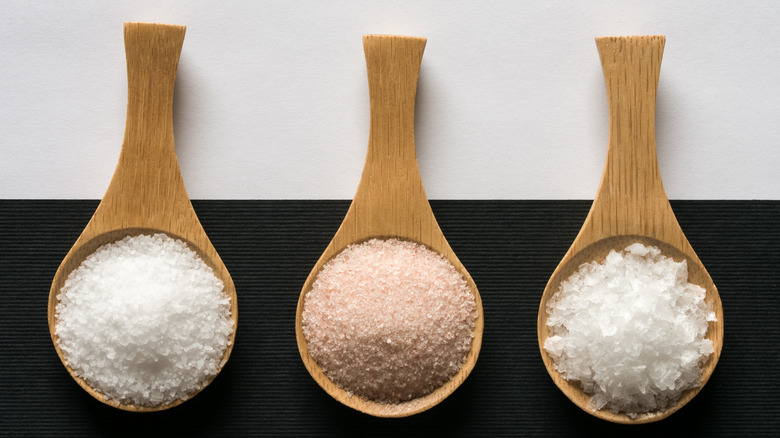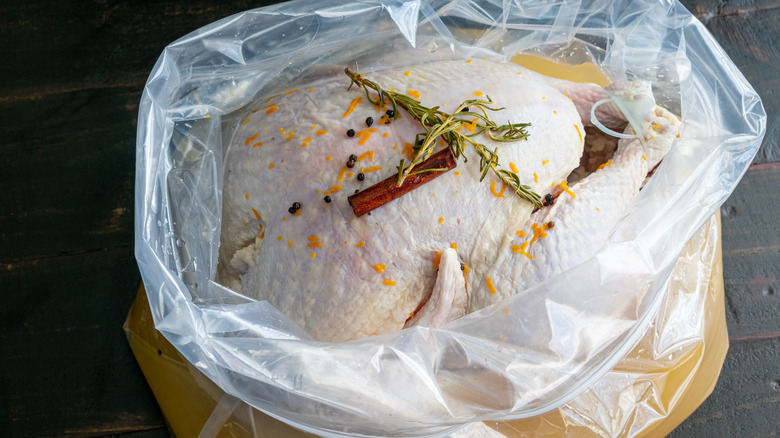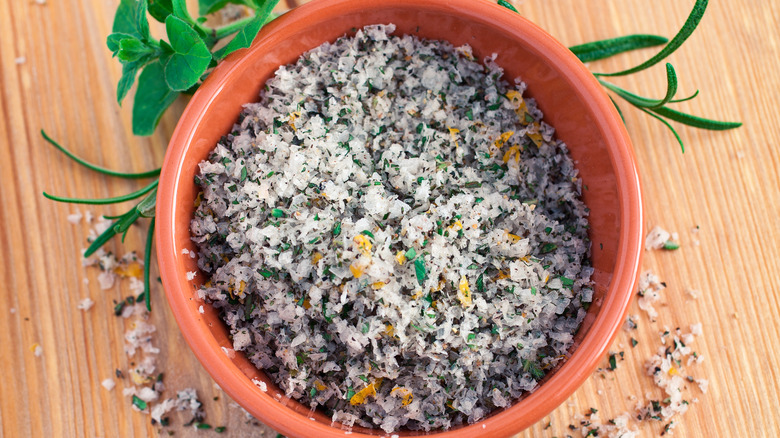The Best Types Of Salt To Use For Dry And Wet Brining
Salt is just salt, right? Chemically, yes. However, there are other variables that come into play when considering what type of salt to use in various culinary endeavors. The size, the look, the flakiness or structure, and what, if any, other minerals or flavoring components are in the salt can make a big impact on the final dish. There is also the question of what technique is being deployed. For example, brining is a salt-intensive seasoning method that benefits from consideration as it isn't a one-size-fits-all approach.
What is brining? A brine is a salty solution that foods can be packed in, historically for preservation purposes but also to impart flavor. Pickles, of course, see a brine bath, but so too can one submerge meats — especially those that can be a bit dry, like poultry — in brine for flavor and succulence. A brine for meat or vegetables can contain not just salt, but other ingredients which further flavor the food, such as herbs and aromatics. But what is described is only one kind of brining, specifically wet. There is also, though a bit of a misnomer, dry brining, a method that eschews a liquid dip for a salty rub that may also contain added ingredients.
How then is one to pick the right salt for the job? With a little understanding of the processes of wet and dry brining and desired outcomes, one can move forward with confidence.
Measurement is key for wet brining
The kind of salt you use for a wet brine makes a huge difference in terms of the quantity needed to make a proper brine that is salty enough to get the job done without running your food. The general rule of thumb for a brine is one cup of fine salt — the consistency of table salt — or two cups of kosher salt to one gallon of water. Note that kosher salt, with its larger grains, weighs considerably less by volume than finely ground salt, so you can also arrive at your ratio by weight, allowing for 10 ounces of salt for every gallon of water.
When it comes to what salt to choose, remember again that salt is salt. But that also means that purity is important. Look for kosher or fine salts that are labeled as such, meaning they are free of iodine and anti-caking agents. Morton and Diamond Crystal kosher salts are two brands beloved by chefs for their purity and consistent crystal size. Other salts, such as coarse sea salt and Himalayan Pink salt can be used for a brine, with some arguing the latter adds flavor due to its mineral content. Keep in mind though, that due to the different sizes of their crystals, these should be weighed before use to ensure that the brine is not over or under-salted.
Get specific for dry brining
Dry brining is best thought of as a heavy rub of salt with other flavorings possibly added. With salt more front-and-center, you want to be a bit more specific when it comes to what type is used. Kosher and other coarse salts are widely considered the best option as they will cover the meat well, spread easily, and resist clumping. There is also no real consensus on the proper weight-to-salt ratio for dry brining. Some people will argue that half a teaspoon of salt per pound of meat is correct, but others recommend up to a teaspoon and a half.
You'll again want to keep purity in mind when selecting a salt, i.e. non-iodized and free of other unnatural additives. As chefs typically drive conversations around the best ways to dry brine a piece of meat, Morton and Diamond Crystal kosher salts are frequently called for by name in recipes. Both brands also make unadulterated fine salt as well. You may also notice some other coarse salts in the grocery store or online, such as Maldon Sea Salt and Jacobsen Sea Salt. These brands, and others, are often referred to as "finishing salts" on account of the large and/or flaky form of their crystals which provide already cooked foods with a saline intensity and crunch. They can indeed be used for dry brining, but they come at a hefty price and much of the appeal will be lost as the salt melts into the meat.


